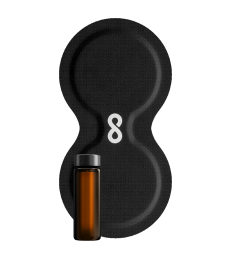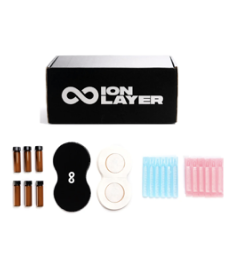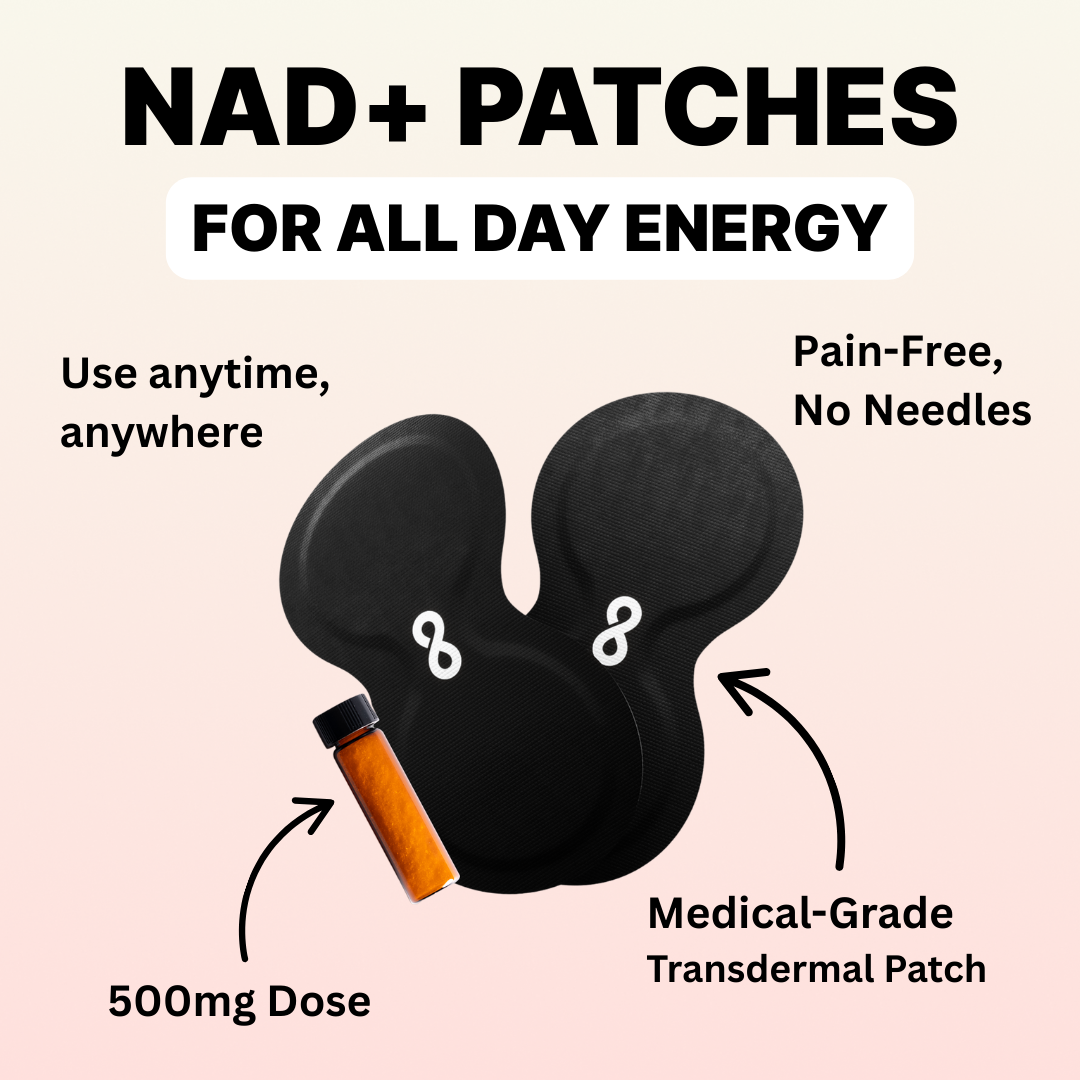
In the bustling hive of activity that is the human body, NAD, or Nicotinamide Adenine Dinucleotide, navigates a symphony of biochemical reactions. As a vital coenzyme, it’s found in every cell in your body, and involved in hundreds of metabolic processes. But, like a maestro commanding a misbehaving orchestra, it often goes unnoticed until something goes awry.
Indeed, NAD is the unsung hero of the high-performing cellular world. It's the proverbial "man behind the curtain," facilitating the conversion of food into energy, repairing damaged DNA, and regulating our circadian rhythms. Essentially, without NAD, we're like a smartphone without battery life - functional in theory, but utterly useless in practice.
However, the cruel twist in our tale is that NAD levels naturally decline with age. Yes, the very substance that keeps our biological machinery running smoothly diminishes as we grow older. The phrase "life's not fair" has never been so apt. Visit one of our previous blogs on NAD and aging for all the details on this inevitable decline.
Understanding NAD Deficiency
NAD deficiency, as the name suggests, is a state where your body does not have enough NAD. It’s like your phone dying just as you’re waiting for an important call. The consequences of not having enough NAD are more serious than these everyday inconveniences though.
When your body faces NAD deficiency, it's like a city-wide blackout for your cells. Things don't function as they should. And this can lead to a host of health issues.
NAD deficiency can be stealthy, creeping up on you like a thief in the night. The tough thing about NAD deficiency is that it's often overlooked or misdiagnosed, mainly because its symptoms can be quite broad and can mimic other health conditions. You may not even realize you're deficient until you start to notice certain signs. But don't worry, we're here to shine some light on this shadowy figure and help you understand what it's all about.
The Correlation Between NAD Deficiency and Energy Levels
Now, you might be wondering, "What does NAD have to do with my energy levels?" It's simple. Remember how we mentioned that NAD helps convert food into energy? When you have less NAD, your cells struggle to produce energy, leading to feelings of fatigue and lethargy.
Think of NAD as the coal in the furnace of your body's steam engine. When the coal supply (NAD) is low, the engine (your body) can't produce enough steam (energy), and the train (your daily life) starts to slow down. Suddenly, climbing a flight of stairs feels like scaling Mount Everest, and your morning jog feels like running a marathon.
Fatigue and NAD Deficiency
Fatigue is one of the most common signs of NAD deficiency. It's like that uninvited party guest who overstays their welcome and drains the energy out of the room. Except, instead of ruining a party, it's ruining your day-to-day life.
But why does NAD deficiency cause fatigue? When there's not enough NAD, your cells can't produce enough ATP, the molecule that provides energy for cellular functions.
If you're constantly feeling like you've been hit by a truck, it might not just be because you're "getting older" or "not sleeping enough." It could be your body's way of telling you that your NAD levels are low.
The Five Signs of NAD Deficiency
These signs are your body's distress signals, its way of saying, "Hey, I need more NAD!"
- Chronic fatigue: It's normal to feel tired after a long day of work or a strenuous workout. But if you feel exhausted all the time, even after a good night's sleep, it might be a sign of NAD deficiency.
-
Muscle weakness: NAD plays a crucial role in muscle function. If you're experiencing unexplained muscle weakness or pain, low NAD levels could be the culprit. In one study published in Cell Metabolism researchers investigated the skeletal muscle of mice, by specifically removing Nampt, a crucial enzyme in the NAD salvage pathway. Mice that had this enzyme removed showed a significant 85% decrease in the level of NAD within their muscles. This was also accompanied by the degeneration of muscle fiber and a gradual decrease in muscle strength and treadmill endurance.
Additionally, in another study on humans, researchers stated that higher levels of NAD+ correlated with higher average daily step count as well as better functionality of mitochondria and muscles.
-
Cognitive decline: NAD is essential for brain health. Memory lapses, difficulty concentrating, or a decline in mental agility can signal a deficiency. Researchers have found that boosting NAD+ levels reestablishes mitochondrial functionality and bioenergetics, resulting in improved neuronal survival and enhanced cognitive abilities in prematurely aging animal models.
Another interesting study discussed the connection between Alzheimer’s disease and NAD+ decline. Researchers suggested that NAD+ reduction and disruption of NAD+-dependent metabolic processes greatly influenced the pathological characteristics of Alzheimer's Disease (AD). Furthermore, replenishing NAD+ has been shown to enhance cognitive function in various AD models across different species.
- Mood swings: When NAD levels drop, it can affect your mood, leading to irritability, anxiety, or depression. NAD plays a role in the reduction of reactive oxygen species (ROS) that may accumulate over time and as we age. Not enough NAD will leave those ROS floating around wreaking havoc on mitochondrial function and they are also associated with neuropsychiatric disorders like major depressive disorder.
-
Sleep disturbances: Studies have shown that NAD, much like many other processes in the body, respond to a circadian clock. As NAD levels oscillate over a 24-hour cycle they communicate with other metabolic and cellular mechanisms. Hence, a disturbance in NAD levels may negatively impact your natural circadian rhythm and sleep.
Other Health Impacts of NAD Deficiency
NAD deficiency doesn't just hit your energy levels, muscle function, cognition, and sleep; it can impact other aspects of your health as well. Low NAD levels have been linked to accelerated aging, neurodegenerative diseases like Alzheimer's, heart disease, and even cancer. It's like a domino effect - when NAD levels fall, it can trigger a cascade of health issues.
Moreover, low NAD levels can impair your immune system, making you more susceptible to infections. Think of it like having a faulty alarm system - you're more likely to experience a break-in (infections) because your security (immune system) is compromised.
How to Diagnose NAD Deficiency
Diagnosing NAD deficiency can be challenging. It's not like a broken bone that can be spotted on an X-ray or a fever that can be detected with a thermometer. But certain tests can help identify low NAD levels.
These tests measure the levels of NAD in your blood or tissues. However, diagnosing NAD deficiency often involves looking at the bigger picture - your symptoms, your lifestyle, and your overall health. After all, a detective doesn't solve a mystery by looking at a single clue, right?
One of the few NAD tests out there is called Jinfiniti. It’s the one that our co-founder Brandon Detweiler used to test his NAD levels and see how they changed from using Ion Layer NAD Patches. Take a look at his blog on how he was able to increase his intracellular NAD+ levels 48% in just seven days with Ion Layer.
Boosting NAD Levels with Ion Layer NAD Patches
Now that we've identified the problem, let's discuss the solutions. Boosting NAD levels can be as simple as making some lifestyle changes. Regular exercise, a balanced diet rich in NAD-boosting nutrients like tryptophan and niacin, and adequate sleep can help increase your NAD levels.
However, a little extra push of NAD can speed up your quest to counteract NAD decline. And by “extra push” we don’t mean IV push. NAD patches offer an advanced and convenient solution. The Ion Layer Patches provide a unique transdermal delivery of NAD+ that allows anyone interested in NAD+ therapy to feel and experience the effects and benefits of NAD+ without the needles and without the hassle of taking your time to go to an IV clinic and dish out hundreds of dollars or more per treatment.







